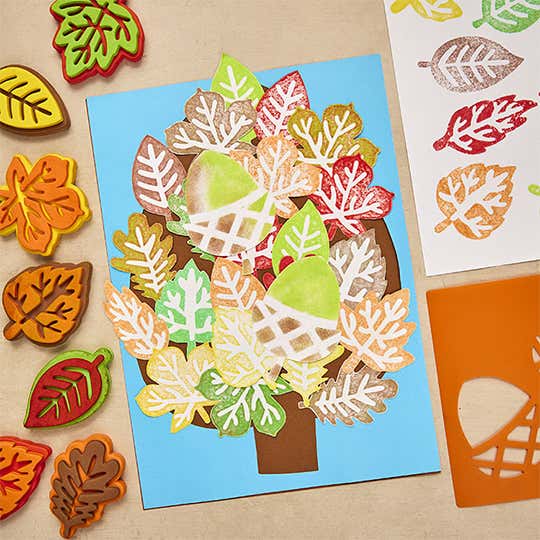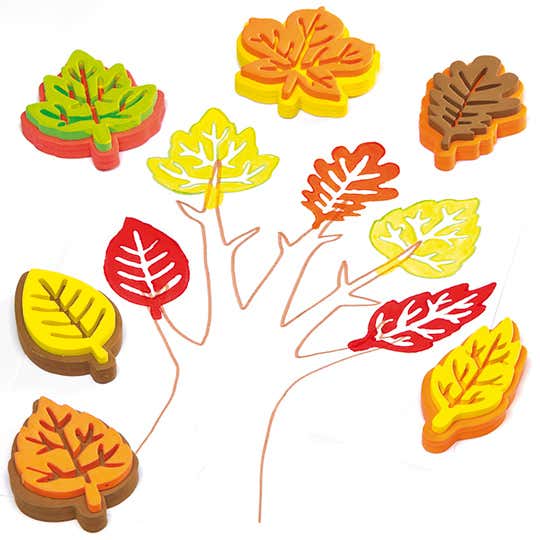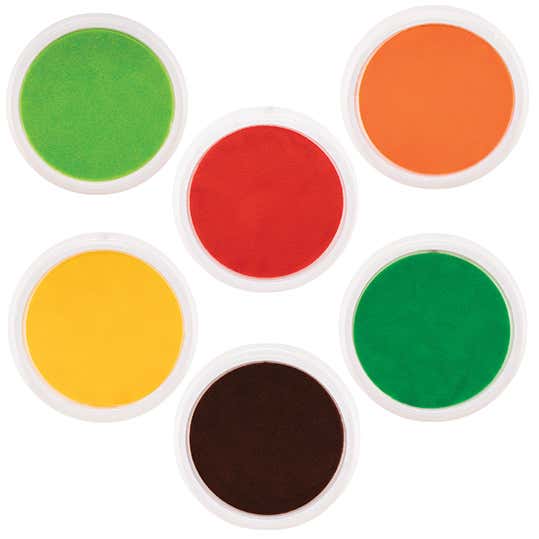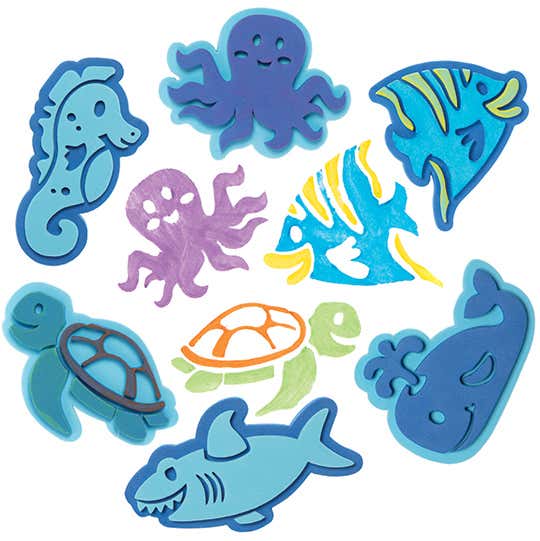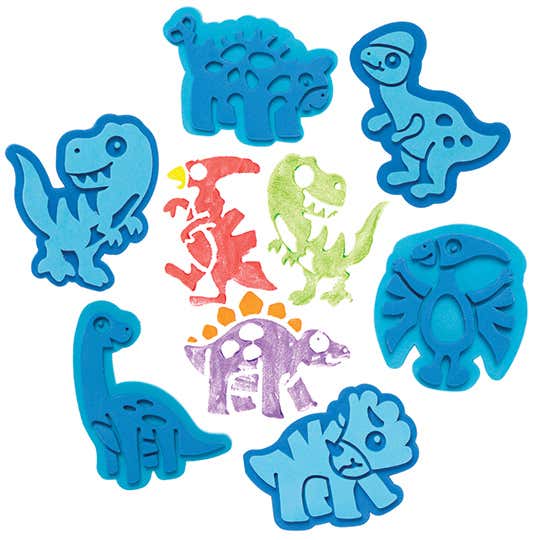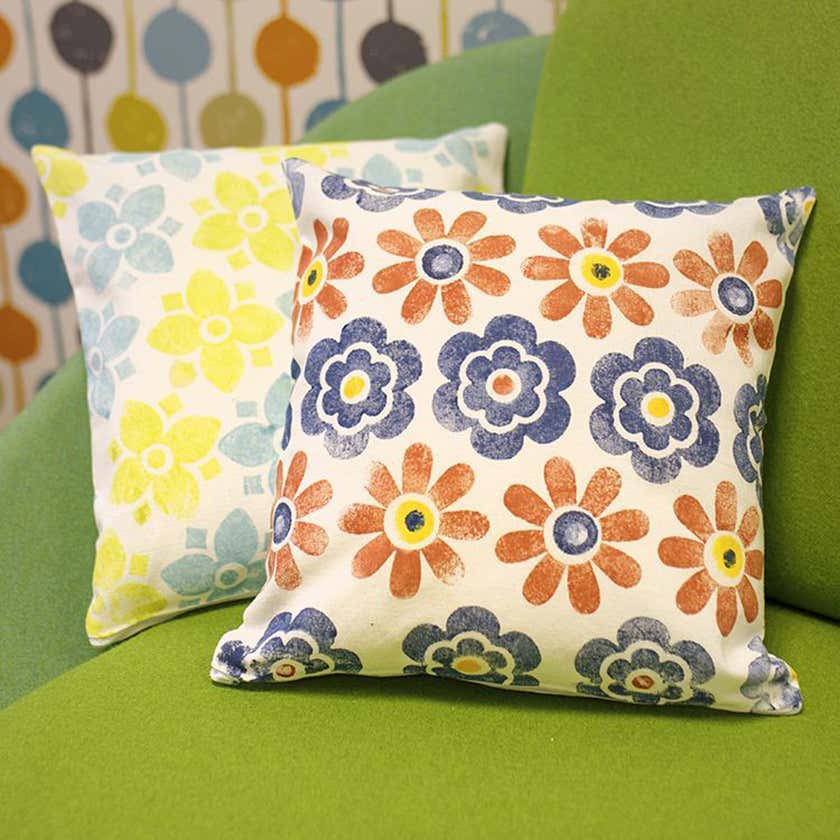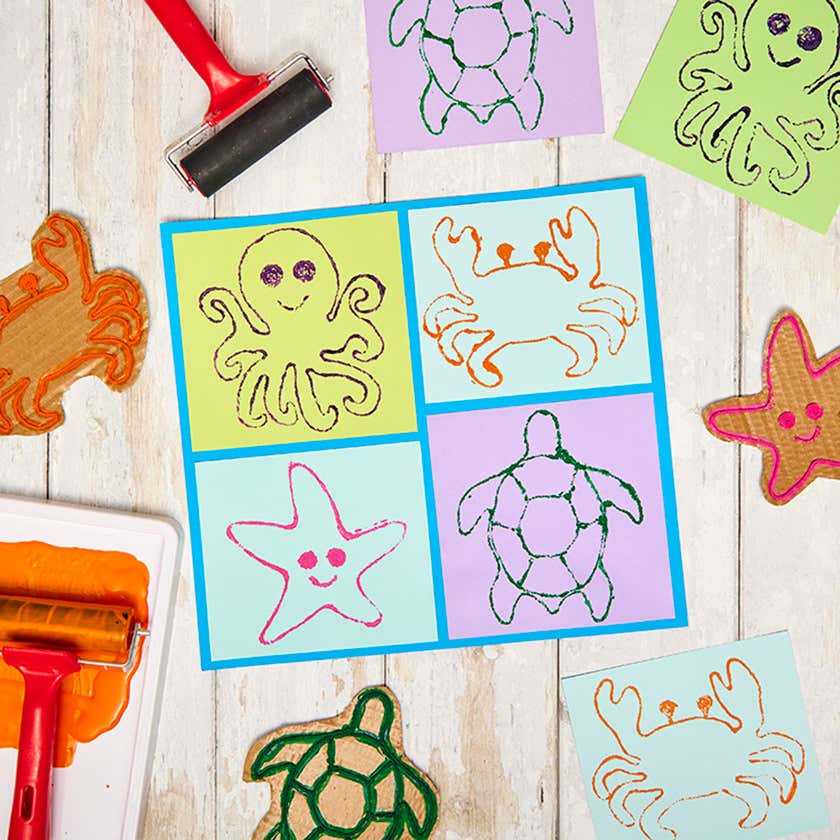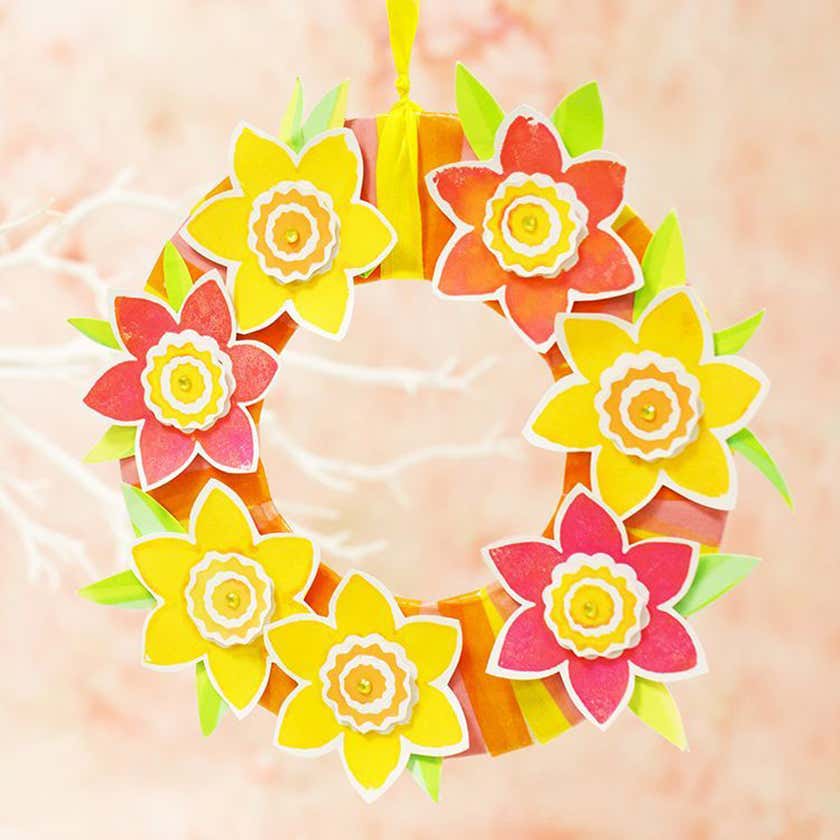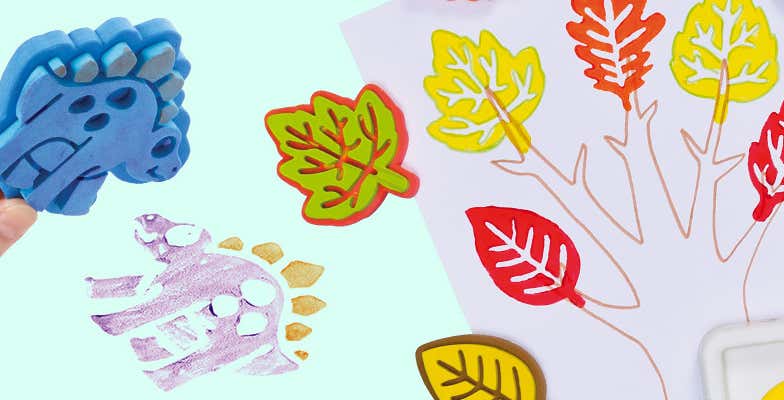
Stamp Art Techniques
What is stamp printmaking ?
Lets’ start with the basics and a short explanation of exactly what stamp making art is. Adults may fondly remember their early painting activities using a potato cut in half and a design cut out of it. Most likely it was a cross or a letter from the alphabet. A simple technique of using a stamp, which can be made from a variety of materials, that is dipped into paint and pressed onto some card repeatedly to form a pattern. The final design may be simple and basic or include intricate and complex patterns and adding different paint colours along the way.
The history of stamp making art
Whilst stamp making, in various forms, has been around for hundreds of years its popularity can be attributed to Ray Johnson, an American artist, who started to use rubber stamps to decorate envelopes in the early 1940s.
How to you make stamp art?
The three main things you need to get started are:
- • Some card, paper or material
- • Acrylic paint
- • A stamper
You may want to create your own stamp for art print but, if not, Baker Ross have a good choice of different foam stamps to choose from, including dinosaurs and sealife foam stampers.
There are many creative ways to utilise crafts materials you already have if you have decided to make your own stamp. Taking some old wooden blocks, get into a stamp making art mindset and see what you have around the house that could be glued on to leave a good imprint:
- • Plastic letters or wooden shapes
- • Add several layers of thick string
- • Leaves from the garden
- • Buttons, coins, flat dried pasta shapes
What kind of paint do you use for stamp art printmaking ?
As with so many children’s art activities, acrylic paint is the go to versatile option to achieve great results. It works particularly well with foam rubber stamps too. Simply put a little onto a flat plastic plate or lid and press the stamp firmly down. Then carefully lift and place onto your design, pressing firmly and evenly for a few seconds.
You could use regular children’s art box paint but it will need to be a thick consistency to match acrylic results. Watercolour paint works too but gives a much softer fading result and is preferred by adults when painting repeated shaped such as flowers. If using material make sure to use textile paint.
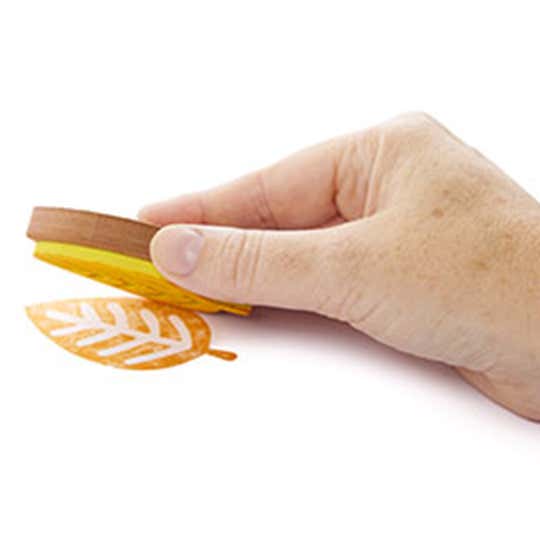
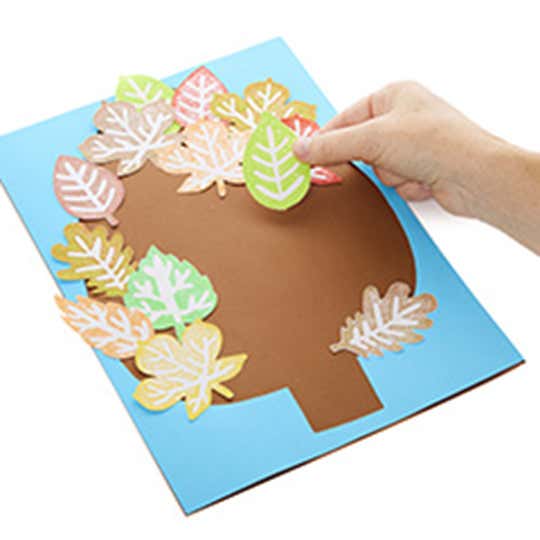
Top Tip
If your stamp has a lot of tiny or intricate detail you may find it better to use a small paintbrush to add paint to those sections.
The benefits of stamp art printing
Apart from having fun, parents and children will notice their manual dexterity and general fine motor skills improve. This is because they will start to learn to line up the stamper to print where they want and the more they do it the better and more accurate they will become.

Pop over to Creative Station using the handy links below to see lots of projects and stamp making art ideas. Stamp art printing is not just for younger children. You could design cushion covers, make themed collages or add stamp printing to other fun art activities. There is no limit to what you could create.



